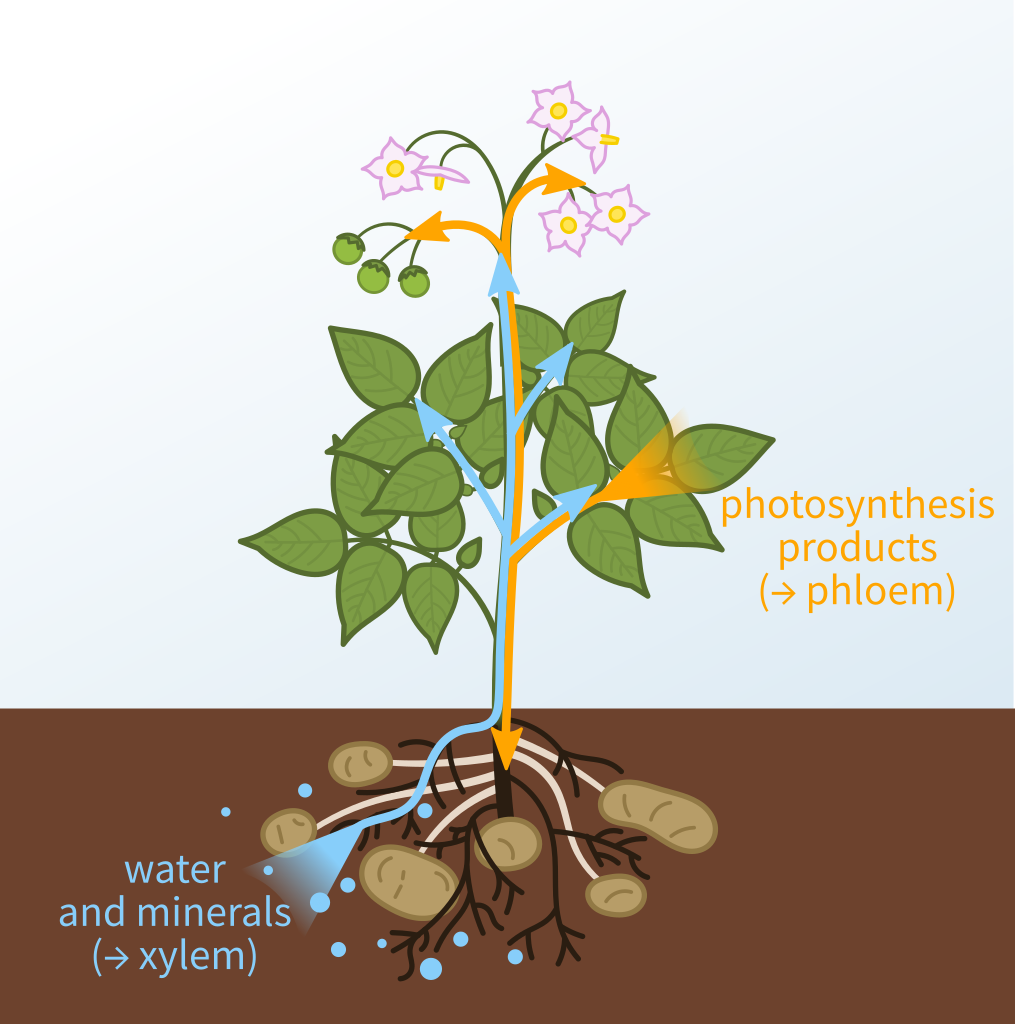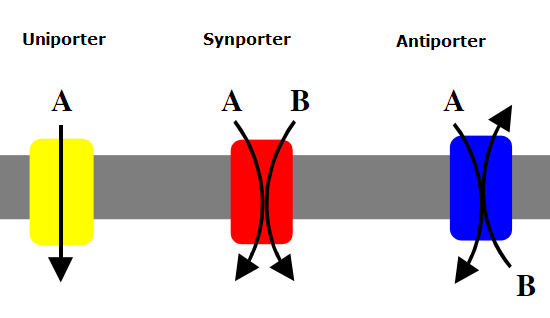In a flowering plant, mineral such as water, mineral nutrients, organic nutrients, and plant growth, regulators are the substances that needs transportation over a small distance.
Substances move by cytoplasmic streaming by active transport and by diffusion.
While transportation of mineral over longer distances proceeds through the vascular system(the xylem and the phloem), it is called translocation.

Index
Means of Mineral Transportation
Diffusion
- Diffusion involves the random movement of molecules. The net outcome being substances moving from regions of higher concentration to areas of lower concentration.
- Movement by diffusion is a passive process and may be from one part of the cell to the other, from cell to cell, or over short distances.
- No energy expenditure takes place.
- Diffusion is a slow process and can occur in non-living systems too.
- Diffusion rates are affected by the gradient of concentration, the permeability of the membrane separating them, pressure, and temperature.
- Diffusion is the only means for gaseous movement within the plant body; hence it is of great importance.
Facilitated Diffusion
- The diffusion across a membrane also depends on its solubility in lipids, the membrane’s principal constituent.
- Lipid soluble substances diffuse faster through the membrane. Substances with a hydrophilic group find it challenging to pass through the membrane; hence their movement must be facilitated.
- In facilitated diffusion, special proteins move substances across membranes without expending energy. This process is called facilitated diffusion.

The porins are proteins that form large pores in the outer membranes of the plastids, mitochondria, and some bacteria allowing molecules off small size proteins to pass through.
Uniport is the process when a molecule moves across a membrane independent of other molecules.
Some transport proteins allow diffusion if and only if two types of molecules move together.
Both molecules cross the membrane in the same direction in a symport, but they move in opposite directions in antiport.
Active Transport
- Active transport pumps molecules against a concentration gradient to transport using energy.
- Specific membrane proteins carry out active transport. Hence different proteins in the membrane play a significant role in both active as well as passive transport.
- Pumps use energy to move substances across the cell membrane. These pumps transport substances from a low concentration to a high concentration.
- The transport rate is maximum when all the protein transporters are being used or are saturated.
- These proteins are sensitive to inhibitors that react with protein side chains.
Osmosis
The plant cell is surrounded by a cell membrane and a cell wall. The cell wall is freely permeable to water and substances in solution hence is not a barrier to movement.
Osmosis is the term used for the diffusion of water across a selectively permeable membrane.
Osmosis occurs as a response to a driving force. The net rate and direction of osmosis depend on both the concentration gradient and pressure gradient.
Water will move to its lower chemical potential from its region of higher chemical potential until equilibrium is reached.
At equilibrium, the two chambers should have nearly the same water potential.
Plasmolysis
The behavior of tissues concerning water movement depends on the surrounding solution.
It is said to be isotonic if an external solution balances the cytoplasm’s osmotic pressure.
If the solution inside is more concentrated than the external, then it is hypotonic.
If the external solution is more concentrated, it is hypertonic.

Cells shrink in hypertonic ones and swell in hypotonic solutions.
Plasmolysis occurs when water moves out of the cell, the cell membrane of a plant cell shrinks away from its cell wall.
When the water in the cell is in equilibrium, the cells are flaccid.
The process of plasmolysis is usually reversible.
Imbibition
Imbibition is a particular type of diffusion where water is absorbed by solids or colloids, causing them to rise in volume.
The classic samples of imbibition are absorption of water by seeds and dry wood. The prehistoric individuals had used the pressure created by the swelling of wood to separate rocks and boulders.
Imbibition is also diffusion since water movement is a concentration gradient; the seeds and other such materials have almost no water; hence they absorb water quickly.
Water potential gradient between the absorbent and as well liquid imbibed is crucial for imbibition.
Questions
Question 1. What are porins?
Solution. Porins are types of proteins that form pores of large sizes in the outer membranes of plastids. They help in facilitating the passive transport of small-sized protein molecules.
Question 2. Define Isotonic, hypotonic, and hypertonic solutions.
Solution. For cells placed in a hypertonic solution, water will leave the cell, and the cell will shrink.
In an isotonic environment, there is no net water movement as both concentrations are almost similar.
And for cells placed in a hypotonic environment, they will experience water inflow, and the cell will swell.
FAQs
A uniporter is a membrane transport protein that transports a single species of substrate across a cell membrane.
Osmosis is water molecules’ movement from a high water potential to a lower water potential across a semi-permeable membrane.
Plasmolysis is the shrinkage of a cell due to the persisting movement of the H2O molecules out of the cell.
Porins are proteins that cross a cellular membrane and act as a pore, through which other molecules can diffuse.
The xylem’s structural elements are tracheids, vessels or tracheae, xylem fibers, and xylem parenchyma.
